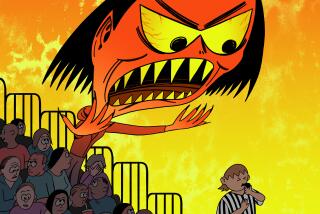Post-concussion return to learning also a tough decision
After Krista Rickards’ daughter Sarah suffered a severe concussion on a high school volleyball court in September 2010, the teenager returned to school in a matter of days. Sarah looked just fine. But she quickly became a regular at the school nurse’s office, complaining of dizziness and severe headaches triggered by the noise and chaos of the halls and lunchroom, by overhead projections used in classrooms, and by long days and nights of books and homework.
The nurse in her New Jersey high school would let her lie down for a while but eventually dispatched Sarah back to classes. There, the then-sophomore battled problems with memory and concentration before coming home, exhausted and depressed, and trying to get through homework.
By the end of the school year, Rickards had enlisted the help of a neuropsychologist for her daughter. This was new territory for the administrators at Sarah’s high school in Cape May Court House, N.J., but Rickards stood firm. Eventually, they negotiated a raft of accommodations that would exempt Sarah from gym class and give her extra time she needed to take tests and complete her assignments.
But by then, Sarah had suffered several more concussions -- in gym class, on the sidelines of volleyball games, in the school stairwell. Sarah was suffering from what neurologists call post-concussion syndrome and eventually had to be home-schooled before graduating last June.
Study: No helmet brand can save football players from concussion risk
After a child has a concussion -- whether under the Friday-night lights or in a jungle-gym accident -- the return-to-play deliberation has gotten plenty of attention. But there’s mounting evidence that returning to the rigors of academic activity too soon also can slow healing and exacerbate symptoms. Yet parents, patients and physicians have gotten scant advice on how to manage a child’s return to learning after a concussion.
For the first time, a new report in the journal Pediatrics systematically addresses that deliberation. The report underscores that, for a child with mild traumatic brain injury, the noise and chaos of school hallways, the eye strain of classroom instruction and the mental calisthenics of homework and tests can tax the brain at a time when its energies are needed for healing.
It also acknowledges that giving a student’s brain healing time is a challenge for many school administrators. They have had little guidance on the matter and are under intense pressure to show improvements in students’ test performance, meet the needs of children with long-term disabilities and fulfill an ever-growing list of demands on schools.
“Schools are very structured places, and are really geared toward the average: Everyone gets the same kinds of curriculum,” says Rosemarie Scolaro Moser, a neuropsychologist and director of the Sports Concussion Center of New Jersey in Lawrenceville, N.J. “But every concussion is unique, and each student athlete heals at a different rate. So there’s no predictability, and that unknown causes a lot of discomfort when you’re a school administrator trying to meet goals, deadlines and objectives in a student’s progress.”
Among most school administrators, the lingering cognitive symptoms of concussion and the requirements of a healing brain remain unfamiliar ground, the authors of the Pediatrics article write. And among the pediatricians who manage children’s recovery from concussion, the specifics of educational law and practice can be foreign. Yet both must work together with children and their families to set limits that will allow the brain to heal.
In most cases, that process of recovery will take a week to three weeks, during which a patient’s school time might be limited, homework might be curtailed, and frequent breaks might be tolerated. Administrators might allow a concussed student to move between classes ahead of the noise and confusion after the bell, to waive or reschedule tests, and to let a student eat lunch in a quiet place.
The Pediatrics report offers checklists that parents, physicians and schools can use to identify symptoms that are triggered by school-related activities, and to track them as they resolve.
Brooke de Lench, a youth sports expert who founded the group Mom’s Team, said new findings about concussion and its aftermath have begun to find their way to physicians and coaches but are still trickling down to parents and school administrators.
“It usually takes a few years,” said de Lench, whose film, “The Smartest Team: Making High School Football Safer,” is airing this fall on PBS. Patients’ families and their doctors are now coming together to help student athletes heal after concussions.
“Now,” she said, “the schools really need to get behind this.”
That, says Krista Rickards, whose daughter is now a freshman in college, won’t be easy, not only because of the competing demands on school administrators, but also because of the nature of concussions.
“As a parent you have to push. I wasn’t aggressive, but I was persistent,” Rickards said. Once she had clear recomendations from neuropsychologist Moser (authored of “Ahead of the Game: The Parents’ Guide to Youth Sports Concussions”), Sarah’s school agreed to accommodations, she said.
“It’s hard, though, because a concussion is not a seen injury. You can see crutches, you can see a cast, or a wheelchair. You can’t see a concussion,” she said.
ALSO:
Concussions: Even one can change the brain, study finds
Football concussions: The smaller hits matter too
Study finds concussions common in teens
Concussion settlement highlights difficulty of proving brain damage






